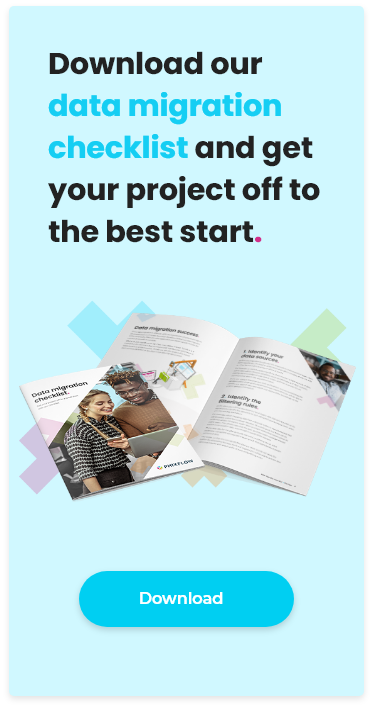Top 3 Challenges in Migrating Data from SAP to Microsoft Dynamics 365
If you, or your customers, are considering a data migration from SAP to Microsoft Dynamics 365 and would like to know how to ensure a successful transition to a new system, here are top 3 challenges that will need to be addressed.
The decision to migrate data from one system to another is a strategic move often fueled by evolving business needs. One such transition that companies undertake is the shift from SAP to Microsoft Dynamics 365. SAP and Microsoft Dynamics 365 are both robust ERP systems, each with its unique strengths. Yet, as business requirements evolve, organizations may opt to switch platforms to better align with their goals, leverage advanced features, or optimize costs.
However, data migrations are fraught with many pitfalls, therefore it is essential to have a well-defined, organised approach to migrating your data.
Over the years we have successfully completed many data migrations, even where others had failed to do so. This has enabled us create a proven SAP to Microsoft Dynamics 365 data migration methodology to ensure projects are delivered on-time and on-budget.
Embarking on a data migration journey from SAP to Microsoft Dynamics 365 entails confronting several critical challenges. Data migration projects are notorious for their complexity and susceptibility to failure. According to a Gartner, data migration projects often exceed their budget by 25% to 100% or more, due to a lack of proactive attention to data quality issues.
However, amidst these challenges lies an opportunity for success. Recent years have witnessed the emergence of specialized migration tools, services and methodologies, contributing to enhanced project outcomes. Yet, success is not solely guaranteed by these resources. Understanding and addressing the primary challenges are essential prerequisites for a triumphant migration.
For those venturing into data migration from SAP to Microsoft Dynamics 365, here are the top three challenges to navigate:
Challenge 1 – Business Engagement Deficiency
A common pitfall in data migration projects is relegating decision-making solely to the IT department. While IT may possess expertise in legacy data systems, they often lack comprehensive insights into diverse business processes. This gap in understanding can lead to erroneous assumptions, resulting in data load failures or User Acceptance Testing setbacks.
The extent of business engagement required varies based on the nature of the migration project. Transitioning between ERP systems demands substantial business involvement compared to IT-centric migrations like cloud server transitions.
Securing engagement from key stakeholders, despite their constrained schedules, is imperative. Early planning to accommodate their limited availability prevents project momentum from dwindling. Employing sample datasets for real-time analysis facilitates stakeholder collaboration, identifying and rectifying issues promptly.
Challenge 2 – Legacy Data Knowledge Gap
The success of any migration endeavor hinges on a thorough comprehension of existing data repositories. Often, organizations opt for system transitions due to inadequate understanding of legacy data, compounded by the proliferation of “Shadow IT” practices. Departing employees who originally configured legacy systems may not have documented data structures and usage adequately.
This lack of documentation presents a formidable challenge. Without insights into legacy data, accurate estimations of migration effort become elusive, leading to unforeseen costs.
Leveraging appropriate tools early in the project enables organizations to gain comprehensive insights into their data landscape. This facilitates an accurate assessment of legacy data fitness for the new system.
Challenge 3 – Data Quality Assurance
Assuming pristine data integrity in legacy systems is a costly oversight, particularly when amalgamating data from multiple sources. It’s improbable that existing data is flawless and seamlessly compatible with the new system. Manual resolution of data quality issues proves impractical and resource-intensive, especially without specialized tools or expertise.
For instance, discrepancies in financial information, such as bank account validations, can disrupt migration processes. Testing emerges as a pivotal strategy to mitigate such challenges. Tools like PhixFlow facilitate iterative testing of data segments, enabling organizations to refine validation rules and translations before final migration execution.
In Summary
Initiating a data migration from SAP to Microsoft Dynamics 365 presents formidable challenges. However, meticulous preparation and strategic approaches can ensure project success. Understanding legacy data, fostering business engagement, and prioritizing data quality assurance are paramount.
Tips for Success:
- Utilize small sample datasets for early-stage analysis, revealing critical issues swiftly.
- Adopt tools facilitating step-wise migration logic development, prioritizing data discovery and exception handling.
- Employ tools enabling configuration of data correction rules and automated application of manual corrections during subsequent migration iterations.
Find out more about our SAP to Microsoft Dynamics 365 data migration services.
